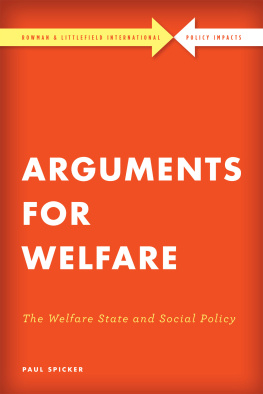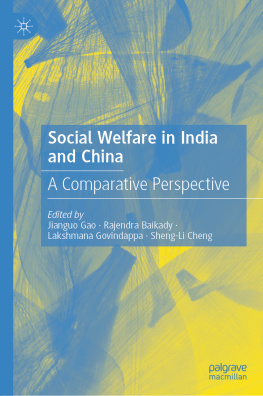First published in Great Britain in 2013 by
University of Hertfordshire Press
College Lane
Hatfield
Hertfordshire
AL10 9AB
Copyright the individual contributors 2013
The right of Steven King and Gillian Gear to be identified as the editors of this work has been asserted by them in accordance with the Copyright, Designs and Patents Act 1988.
All rights reserved. No part of this book may be reproduced or utilised in any form or by any means, electronic or mechanical, including photocopying, recording or by any information storage and retrieval system, without permission in writing from the publisher.
British Library Cataloguing in Publication Data
A catalogue record for this book is available from the British Library
ISBN 978-1-909291-12-6
Design by Arthouse Publishing Solutions
Printed in Great Britain by Henry Ling Ltd
Publication Grant
Publication has been made possible by a
generous grant from the Aurelius Trust.
__________
Acknowledgements
I N NOVEMBER 2008 the Hertfordshire Association for Local History (HALH) annual symposium was held in Chipping Barnet. The host was the Barnet Museum and Local History Society, the theme Care and the Community. Unfortunately, one of the invited speakers, historian Samantha Williams, was unable to attend. It was partly to ensure that the talk she had prepared, on the treatment of unmarried mothers, did not go unheard that I organised a meeting at Welwyn Library in December 2008. People interested in hearing Samanthas lecture and those who might be interested in developing research on social welfare in Hertfordshire were invited to attend. By the end of the day plans had been put in place to work towards producing a book.
A Caring County? Social welfare in Hertfordshire from 1600 is the result of the dedicated work of a team of local historians. The staff of Hertfordshire Archives and Local Studies (HALS) supported us and, with the much-appreciated guidance of Samantha Williams, the next few years were busy ones. Once our research began to produce chapters needing the skills of an editor, we were fortunate enough to find a volunteer for the job: Professor Steven King of Leicester University. We greatly appreciate his help in bringing cohesion and structure to the chapters and with the addition of his excellent introduction we hope we have produced a book that will fill a gap in the published history of our county.
Throughout the whole process, all our contributors have received the help of fellow local historians, friends and colleagues and staff in the record offices and libraries listed in the bibliography, particularly those at HALS. Many individuals and bodies kindly allowed us to use images from their collections. To them all we offer our thanks.
We would especially like to thank the following: Peter Greener at Ashwell Museum, Yasmine Webb at Barnet Archives, the Barnet Museum volunteers, Berkhamsted Local History & Museum Society, Katie Roberts and Roy Smith for the Duchy of Lancaster, Kate Godfrey and John Clark at Enfield Archives, Alison Duke at the Foundling Museum, London, Pirton Local History Group, Les Bedford, Janette Bright, Dr Gillian Clark, Chloe Gardner (deceased), Christine Mason, Jon Mein, William Pumfrey, Jean Riddell and Brian Warren.
Gillian Gear
__________
Contents
1 Introduction: Hertfordshire in context
Steven King
2 The Old Poor Law and medicine in and around Hertford, 17001834
Robert Dimsdale
3 Caring for the sick and poor in eighteenth-century Royston
Carla Herrmann
4 Madhouses of Hertfordshire, 17351903
Gary Moyle
5 Caring for the poor in East Hertfordshire c.162050
Alan Thomson
6 Pensions and the care of the elderly in Ashwell, 16701770
David Short
7 Looking after the poor: Cheshunt parish workhouse in the mid-eighteenth century
Sheila White
8 The Old Poor Law in a rural North Hertfordshire parish, 17311831
Helen Hofton
Introduction to Chapters 911:
A note on the history of the London Foundling Hospital
Jennifer Sherwood
9 Foundling Hospital children at nurse in Hertfordshire in the eighteenth century
David Allin
10 Prudence West and the Foundling Hospital in Barnet, 17571771
Yvonne Tomlinson
11 The last years of the Foundling Hospital Berkhamsted, 193555
Jennifer Sherwood
12 Hertfordshires relationship with certified industrial schools, 18571933
Gillian Gear
Index
__________
Figures
__________
Tables
CHAPTER ONE
__________
Introduction: Hertfordshire in context
Steven King
A N EXPLOSION IN the historiography of poverty and poor relief over the last two decades has revealed and at the same time constructed a complex landscape of experience, practice and official sentiment. It has become clear, for instance, that the poor law was not simply imposed upon the poor. Historians differ on the degree to which the poor were free to exercise agency and to shape the decisions that were taken about their welfare. Observed from the outside, cumulative poor-law practice would seem to suggest that officials from the seventeenth through to the late nineteenth century concurred with this view. While vestries, overseers and boards of guardians might periodically slash the relief lists, refuse applications for relief or arbitrarily reduce allowances, increasingly rich studies of the experiences of poverty in old age, sickness or childhood point to a long-term sense (shared by officials, paupers and communities) that certain groups were simply deserving, whatever the law said.
This is not to say that poor-law practice and sentiment were uniform or predictable, on either a spatial or chronological basis. Historians continue to differ strongly on the relationship between space and welfare. Steve Hindle, Samantha Williams and others point persuasively to no Resolving this question of spatiality requires the sort of systematic county studies of welfare practice which are conspicuous by their absence in the wider historiographical literature. In this sense, the chapters collected together for this volume mark an important advance, suggesting as they do that Hertfordshire was in essence a caring county.
The issue of chronological changes in welfare practice and sentiment is no less contentious. Anchoring their periodisations variously in chronologies of proletarianisation The sense that we can somehow discern a uniform crisis of the Old Poor Law running from the spiralling of relief bills in the 1790s through to reform in the 1830s has fractured. It is absolutely clear that, whatever the public and pamphlet rhetoric of this period, at the coal face of the parish the poor in many communities retained a deeply embedded fellow feeling with other parishioners. The very chronologies of the chapters assembled for this volume, running seamlessly from the seventeenth century through to the 1950s, are an expression of the problems associated with fixed boundaries and a confirmation of the importance of fluidity in these terms.
Of course, matters of chronological and spatial variation are in some senses red herrings. The welfare literature over the last two decades has increasingly focused not on the poor as a lumpen mass, but on particular life-cycle or economic groups, such as the aged, the mad, children or the unemployed. The experience of, and policies towards, these groups might cut across wider considerations of space or chronology, suggesting that we should talk about multiple poor laws rather than a single encompassing entity. Thus, the historiographical literature has increasingly constructed the elderly as a definitive sub-group of the poor. While issues such as the generosity and regularity of allowances for the aged need more empirical work, there is wide agreement that those who yoked together increasing age and a progressive inability to work could expect to achieve a







